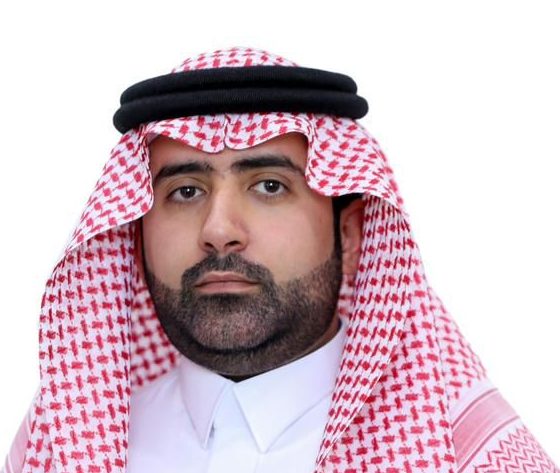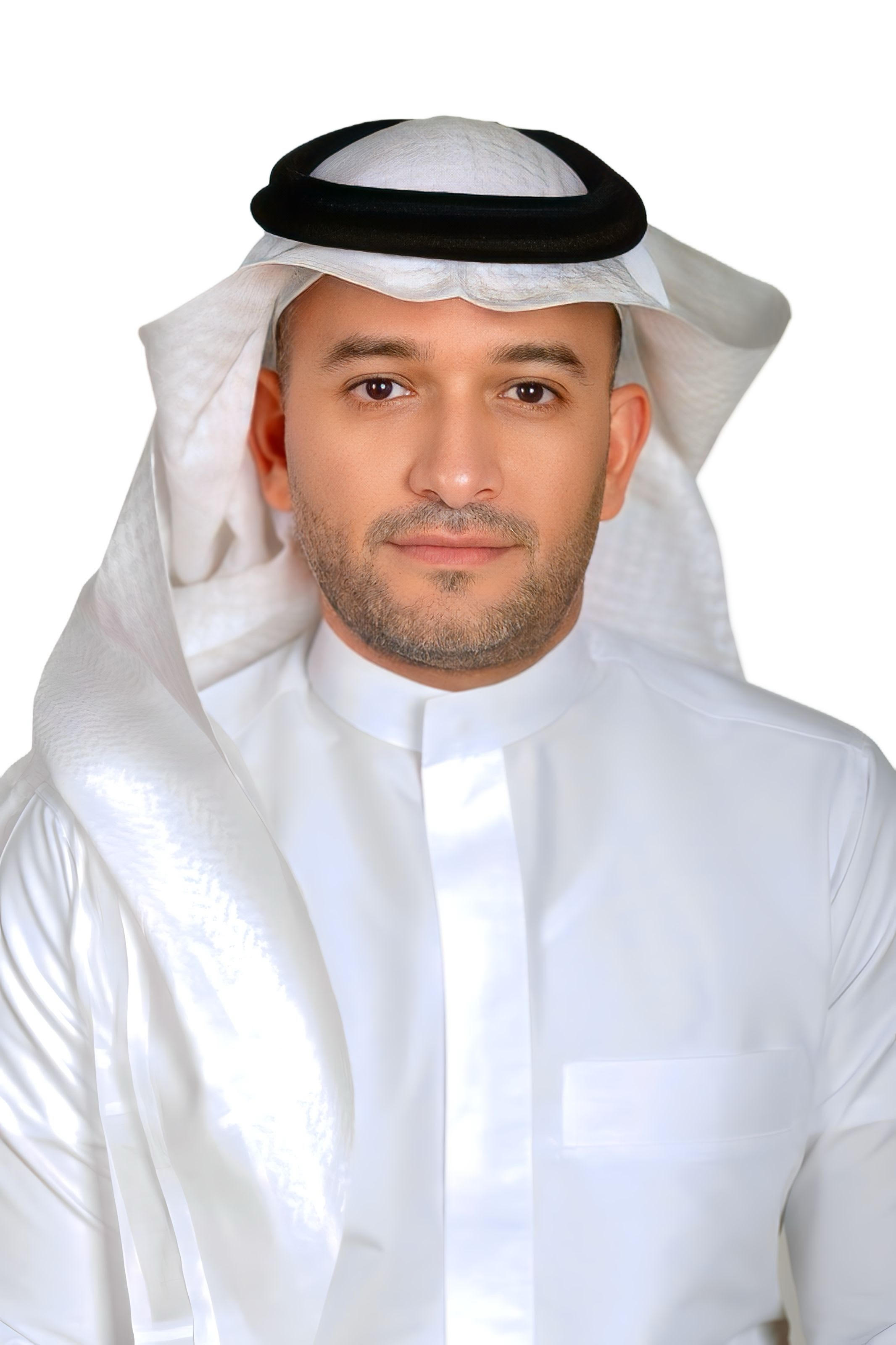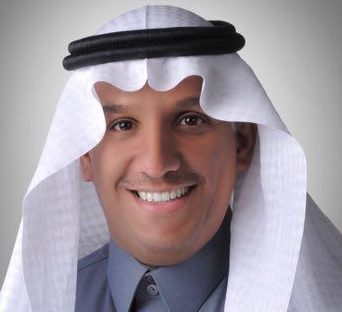© 2020 All rights reserved to Maaal Newspaper
Publisher: Maaal International Media Company
License: 465734
Saudi Arabia’s Vision 2030: Early Signs of Success
Today marks the 8th anniversary of Saudi Arabia’s Vision 2030, a transformative plan that charts a new course for the nation’s future, one where both the country and its citizens can thrive, according to a report published today by the Saudi News Agency.
Vision 2030 rests on three key pillars that leverage the Kingdom’s strengths: its deep cultural heritage, at the heart of the Arab and Islamic worlds; its substantial investment capabilities, which will propel the economy toward new horizons through diversification and development, an economic transformation that critically hinges on the energy and potential of its young population, which makes up more than half of Saudi citizens; the Kingdom’s strategic geographic location at the crossroads of three continents and along vital global shipping lanes, which gives it a unique and influential position on the world stage.
Launched on April 25, 2016, by His Royal Highness Prince Mohammed bin Salman bin Abdulaziz Al-Saud, Crown Prince and Prime Minister, and approved by Custodian of the Two Holy Mosques King Salman bin Abdulaziz Al-Saud, Vision 2030 has sparked an unprecedented period of transformation and growth. This ambitious national plan aims to build a prosperous and secure future for the Kingdom through economic diversification and an improved quality of life.
Vision 2030 is a roadmap for empowering Saudi Arabia’s young and innovative minds. It represents a historic shift, transforming dreams and aspirations into tangible achievements.
As the Kingdom enters its eighth year of Vision 2030, the annual report for 2023 highlights the program’s impressive performance. With 87% of its 1,064 initiatives completed or on track, 81% of the 243 key performance indicators for the third level achieving their targets, and 105 indicators exceeding targets for 2024-2025, Vision 2030 remains firmly on course.
Vision 2030 is driving impressive results in the tourism sector. The Kingdom welcomed 106 million visitors in 2023, including 27.4 million international tourists, making it the second fastest-growing tourism destination in the world.
The number of Umrah performers from abroad skyrocketed to a record-breaking 13.56 million, exceeding the 2023 target of 10 million and nearly doubling a baseline of 6.2 million. Over 131 million volunteers served the Umrah performers, surpassing the target of 110 million. The vision targets 30 million Umrah performers.
Cultural heritage preservation is another area of success. The number of UNESCO-listed Saudi heritage sites climbed to seven, exceeding the 2023 target of six and bringing the Kingdom closer to its 2030 goal of eight. The latest addition, the “Uruq Bani Ma’arid” reserve, further strengthens Saudi Arabia’s rich cultural imprint.
Vision 2030’s focus on international standing has yielded a major win. Thanks to the leadership’s unwavering support, Riyadh secured the prestigious Expo 2030 hosting rights, beating out Busan (Korea) and Rome (Italy) with a convincing 119 votes.
Its focus on improving the quality of life is yielding positive results. Life expectancy in the Kingdom has risen to 78.10 years, exceeding a baseline of 77.1 years, while the vision targets 80 years.
The percentage of population centers, including those in remote areas, covered by health services now stands at 96.41%, surpassing the 2023 target of 96% and a significant improvement from a baseline of 84.13%. Saudi Vision 2030 aims for 99.5%.
The percentage of adults engaging in 150 minutes of weekly physical activity has reached 62.3%, nearing the overall Vision target of 64%, a substantial improvement compared to the 2023 target of 51% and a baseline of 49%.
The Vision is delivering on its promise to increase homeownership rates. Over 66,000 Saudi families have received their new homes, and more than 24,000 new housing units were launched by the end of August. The percentage of citizens owning their homes has reached 63.74%, surpassing the 2023 target of 63%, a significant progress from a baseline of 47%, with the ultimate Vision 2030 goal set at 70%.
Housing support services are also expanding. Over 96,000 citizens have benefitted from these services, with financial support totaling SAR4.1 billion. The services specifically empower working citizens to become homeowners, with the percentage exceeding the 2023 target of 32%, at 32.3%, compared to a baseline of 1%. While this is a positive development, there is still a gap of 6% to reach the overall Vision 2030 target.
Vision 2030 is driving economic growth. The Kingdom’s GDP has reached SAR2,959 billion, exceeding a baseline of SAR2,685 billion. The 2023 target was SAR3,032 billion; however, the results remain a positive step toward the ambitious Vision 2030 goal of SAR6,500 billion.
The focus on economic diversification is also yielding results. The non-oil GDP has reached SAR1,889 billion, surpassing a baseline of SAR1,519 billion and nearing the 2023 target of SAR1,934 billion. The ultimate Vision 2030 target for the non-oil GDP is SAR4,970 billion.
The private sector’s contribution to the GDP has reached 45%, achieving the 2023 target. This represents significant progress from a baseline of 40.3%, a positive step toward meeting the Vision 2030 target of 65%.
Vision 2030 is fostering a thriving small and medium enterprise (SME) sector. Loans to SMEs now represent 8.3% of total bank loans, a significant leap from a baseline of 2%. While this falls short of the 2023 target of 8.6%, it demonstrates progress toward the Vision 2030 goal of 20%.
The Kingdom is also making strides in boosting local content within key sectors. The share of local content in the oil and gas sector has reached 63%, exceeding both the 2023 target of 59% and a baseline of 37%. The ultimate Vision 2030 target is 75%.
The total cumulative export value of oil and gas-related industries has soared to SAR605.43 billion, exceeding the 2023 target of SAR495.4 billion and a baseline of SAR128.9 billion. The long-term Vision 2030 target for this sector is SAR2,114 billion.
Local content is also increasing in non-oil sector spending; it currently stands at 56.8%, surpassing a baseline of 52%. The 2023 target was 59% and the Vision 2030 target is 75%.
Vision 2030 is propelling growth in the domestic military industry. The localization rate of the military industry has reached 10.4%, surpassing both the 2023 target of 9% and a baseline of 7.7%. The ambitious Vision 2030 target is 50%.
The Public Investment Fund (PIF) is emerging as a major economic driver. Total assets under PIF management have skyrocketed to SAR2.81 trillion, exceeding both the 2023 target of SAR2.7 trillion and a baseline of SAR0.72 trillion. The ultimate Vision 2030 target for PIF assets is SAR10 trillion.
PIF is also playing a key role in job creation. In 2023, PIF’s portfolio companies created 93 new businesses, up from 71 in 2022. PIF directly and indirectly generated 644,000 jobs, compared to 500,000 in 2022.
The focus on diversifying exports beyond oil is also yielding results. The share of non-oil exports in the non-oil GDP has reached 24.1%, exceeding a baseline of 18%. While this falls short of the 2023 target of 36%, it demonstrates progress toward the long-term Vision 2030 goal of 50% non-oil exports share in non-oil GDP.
Vision 2030 is making headway in reducing unemployment. The national unemployment rate among Saudi citizens has fallen to 7.7%, exceeding the 2023 target of 8%, a significant progress from a baseline of 12.3%, while the Vision targets 7%.
Technical and Vocational Training Corporation graduates seeking employment within six months of graduation reached 45.8%, a significant increase from a baseline of 13.9%. While this falls short of the 2023 target of 46.6%, it represents progress toward the Vision 2030 goal of 65%.
University graduates are also seeing better results. The percentage entering the labor market within six months of graduation has reached 41.2%, achieving the 2023 target, a substantial improvement from a baseline of 13.3%. The long-term Vision 2030 target for university graduate employment is 75%.
The employment rate for people with disabilities rose to 12.6%, surpassing the 2023 target of 12.3%. This represents an increase from a baseline of 7.7%, while the vision seeks 15%.
Saudi Arabia’s Vision 2030 emphasizes women’s empowerment as a key driver of national development. As Custodian of the Two Holy Mosques King Salman bin Abdulaziz Al-Saud has said in the annual Shura Council speech: “We will continue our efforts to empower Saudi women and raise their participation rates in the public and private sectors.”
Legislative initiatives, championed by Custodian of the Two Holy Mosques and HRH the Crown Prince, aim to ensure that women’s rights are protected and participation in the workforce is encouraged. This focus has yielded positive results. Female participation in the labor force has risen to 34%, approaching the ambitious vision long-term goal of 40%. This represents a significant increase from a baseline of 22.8%, and the Saudi women’s participation has reached 35.5%.
Saudi Arabia’s Vision 2030 shows progress in economic participation and opportunities. The sub-index for this area reached 0.637, exceeding the 2023 target of 0.592. This signifies improvement over a baseline of 0.33, although it falls short of the ambitious vision long-term goal of 0.736.
Positive economic indicators emerged in 2023. The Kingdom achieved some of the lowest inflation rates among G20 economies, with the fourth quarter reaching 1.6% compared to 3.1% in the same period of 2022.
Economic diversification efforts are yielding results. Non-oil activities reached a historic high, contributing 50% to real GDP. This segment also experienced strong growth of 4.7% in 2023.
The Saudi communications and technology market is a bright spot. It emerged as the largest and fastest-growing in the Middle East and North Africa, with growth reaching 10%. This sector’s contribution to GDP also rose to 3.8%.
Saudi Arabia’s job localization efforts gained traction in 2023. Fourteen professions within the logistics sector were localized, and the communications and information technology (IT) sector reached a 65% localization rate.
Job creation initiatives also saw success. The communications and IT sector boasted 354,000 jobs, the cultural sector employed over 216,000 individuals, and the tourism industry provided 913,000 jobs. Additionally, more than 49,000 job opportunities were secured for Saudi social security beneficiaries.
Supporting small businesses, the Social Development Bank facilitated a significant increase in the volume of sales by families working in the cottage industry. These sales surpassed the target of SAR14 billion, reaching an estimated value of over SAR15 billion in 2023.
Healthcare advancements in Saudi Arabia leverage technology. The “Sehhaty” application has benefited over 30 million users, and streamlined access to services. Additionally, the “doctor for every family” program was launched, linking 20 million beneficiaries to dedicated medical teams for preventive and curative care. The Nphies platform further bolstered healthcare access, serving more than 14 million beneficiaries.
Saudi Arabia has identified 50 industrial investment opportunities valued at over SAR96 billion. This is attracting foreign and joint investments, with the percentage reaching 37% of the total in the industrial sector by May 2023, representing over SAR542 billion. The Kingdom’s attractiveness is further evidenced by the relocation of over 200 international companies that set their regional headquarters in Riyadh.
Non-oil government revenue showed significant growth. Compared to a baseline of SAR166 billion, non-oil revenue reached SAR457 billion. This represents progress toward the Vision 2030 target of SAR1,000 billion. The generated revenues cover 35% of the total budget expenditures for 2023, estimated at SAR1,293 billion.
The Kingdom strengthens its global competitiveness, and several independent rankings highlight Saudi Arabia’s progress in the field: it secured 17th place among the 64 most competitive countries. The Kingdom achieved 2nd place globally in the cybersecurity index, 3rd place among G20 countries in overall performance, 3rd among the G20 and 5th globally in indicator of the financial market, and 6th place in the economic performance axis. While there is room for improvement in areas like government efficiency (11th globally), business efficiency (13th globally), and infrastructure (34th globally), these rankings indicate positive momentum.
Logistics and connectivity see improvements. The Kingdom’s performance in the logistics sector is also noteworthy. It achieved 17th place in the World Bank’s Logistics Index and 8th place in the global LLOYD’S classification. Additionally, progress was made in international air connectivity, with Saudi Arabia ranking 13th.
Saudi Arabia witnesses a surge in volunteerism. The Kingdom is making significant strides in fostering a culture of volunteerism. The number of volunteers has skyrocketed to 834,000, exceeding both the 2023 target of 670,000 and a baseline of 22,900. While still short of the ambitious Vision 2030 target of one million volunteers, this represents impressive progress.
Corporate social responsibility is also gaining traction. The percentage of major companies exercising social responsibility has reached 64.8%, exceeding the 2023 target of 57% and a baseline of 30%. While progress continues toward the Vision 2030 target of 90%, this increase indicates a growing commitment to social good within the business community.
Volunteer platform sees high engagement. The National Volunteer Work Platform is facilitating engagement. In 2023 alone, the platform recorded over 53 million volunteer hours and offered more than 528,000 volunteer opportunities. With over one million volunteers registered and contributing in 30 different fields, the platform is fostering a vibrant volunteer ecosystem.
Non-profit sector shows growth potential. The non-profit sector is emerging as a contributor to GDP. Its contribution has risen to 0.87%, exceeding the 2023 target of 0.51% and a baseline of 0.2%, while the Vision 2030 target is 5%.
Non-profit sector employment is on the rise. The percentage of workers employed in the non-profit sector has increased to 0.55% of the total workforce. This surpasses both the 2023 target of 0.39% and a baseline of 0.13%, while the ambitious Vision 2030 target is 3.1%.
Environmental initiatives show progress. Efforts to combat climate change are also under way. As a part of the Saudi Green Initiative, over 49 million trees and three million wild seedlings have been planted across the Kingdom, and more than 975 hectares of agricultural terraces have been rehabilitated in the southwestern region. These terraces are equipped with rainwater harvesting techniques to promote sustainable water use. The area of rehabilitated vegetation cover has also exceeded the 2023 target, reaching 192,400 hectares compared to the target of 69,000 hectares. Additionally, conservation efforts have led to the resettlement of 1,660 endangered animals and the successful birth of seven Arabian leopard cubs. A total of 24.59% of Saudi Arabia’s territory has been designated as nature reserves. This includes 18.1% of terrestrial areas and 6.49% of marine areas.
The Kingdom is making strides in reducing carbon emissions and developing clean energy solutions. Notably, it has begun exporting commercial quantities of clean ammonia to major markets like Japan, Korea, China, Thailand, and Europe. This clean ammonia is used for energy generation in these countries.
Saudi Arabia sent a 40-ton shipment of blue ammonia to Japan in 2020, marking the first integrated clean ammonia value chain. This was followed by a 2021 contract to construct a massive 2-gigawatt water desalination plant for Air Products in NEOM. Moreover, the Kingdom signed preliminary agreements with the Republic of Korea in 2022 to develop green hydrogen.
Saudi Arabia has set ambitious goals for becoming a global leader in clean energy. By 2030, it aspires to be the world’s largest provider of hydrogen, with an annual target of 4 million tons.
The Kingdom is also integrating more renewable energy in its national grid. To date, 2,800 gigawatts of renewable energy have been connected, enough to power over half a million houses.
Saudi Arabia’s Vision 2030 shows steady progress under the leadership and supervision of HRH the Crown Prince. The government effectiveness index reached 70.8 in 2023, exceeding both the 2023 target (60.7) and a baseline (63). The ambitious Vision 2030 target is 91.5.
The remarkable achievements witnessed in the eighth year of Saudi Vision 2030 are credited to both divine favor and the unwavering commitment of the Kingdom’s leadership. These successes echo the vision articulated by HRH the Crown Prince, who declared: “We have named this vision Vision 2030, but we will not wait until then. We will begin immediately.”
Through swift implementation and a collaborative spirit, the Kingdom strives to become a reason for pride for all its citizens.
To view the annual report of Saudi Vision 2030 for the year 2023, visit the following link:
https://www.vision2030.gov.sa/en/
Related







